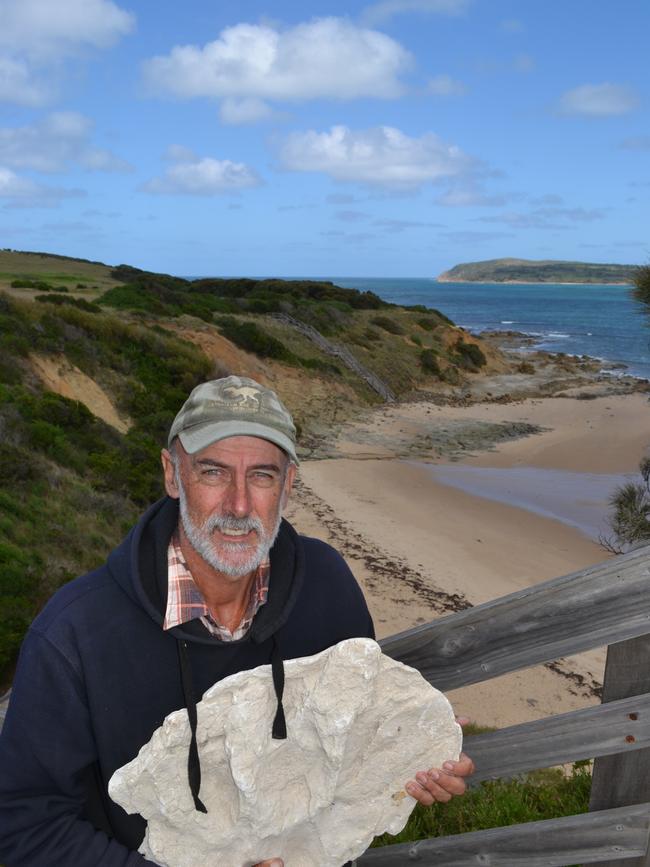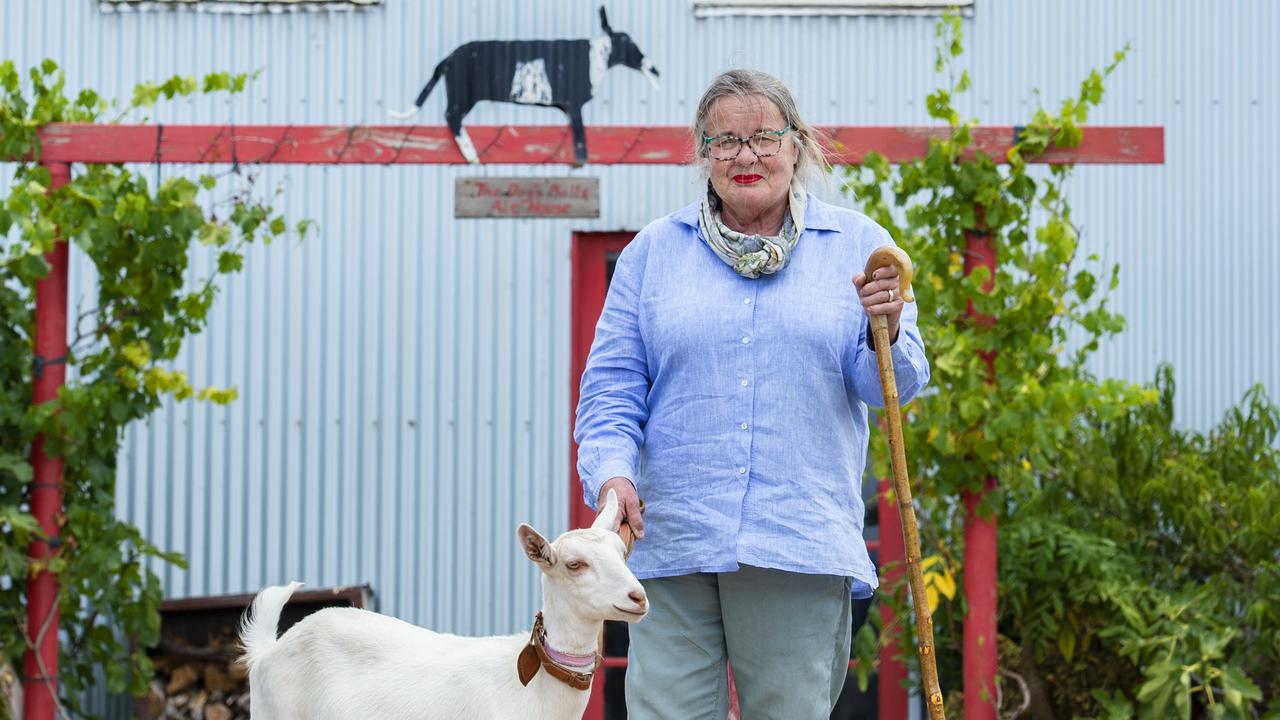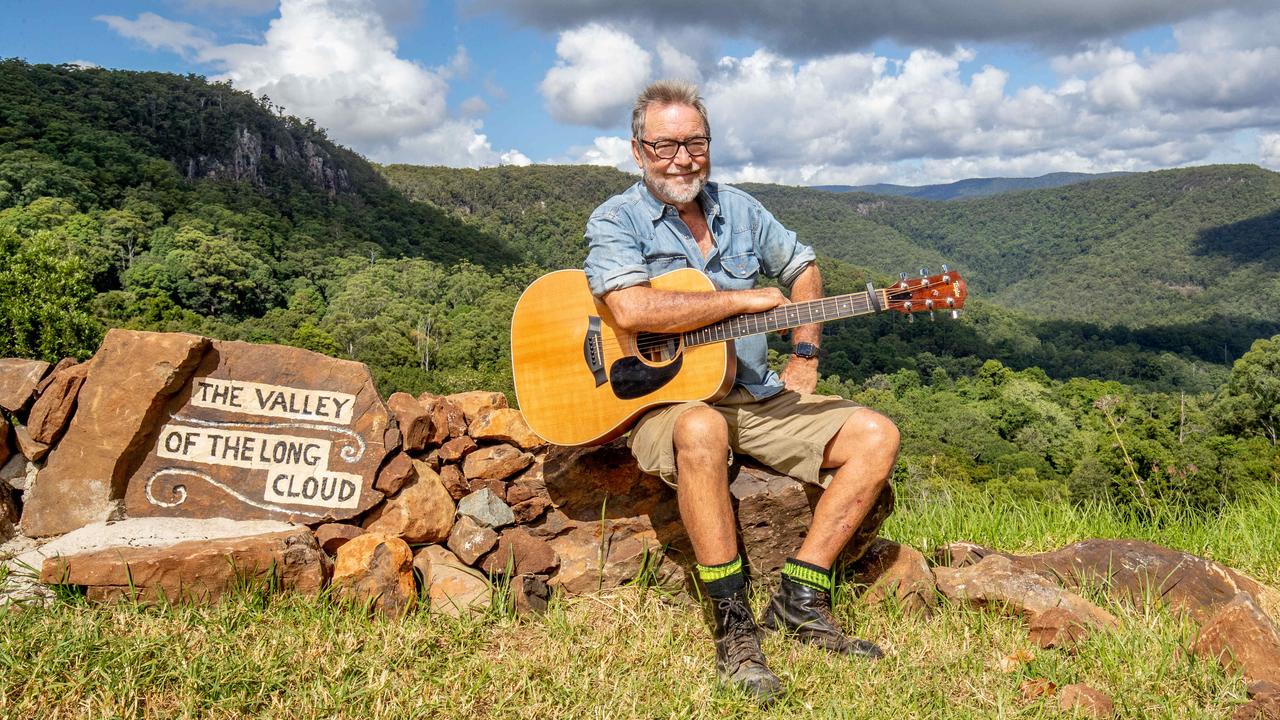South Gippsland dinosaur trail plan to shine light on prehistoric past
This part of regional Victoria was once the stomping ground of some incredible creatures, which will be the stars of a new tourist trail in the planning.
FEW people have a prehistoric creature named after them.
But the giant carnivorous salamander Koolasuchus cleelandi — which lived about 125 million years ago (give or take) — has Gippsland fossil hunter Mike Cleeland to thank for its name.
Mike was wandering a beach off San Remo, on Western Port Bay, about 30 years ago when he came across the find.
“I was looking in a rock platform off Rowell’s Beach, an area I’d not looked at before, when I found it,” Mike says.
“It was the shock of my life. It was partly embedded in the rock and at first I thought it was a piece of tree.”
Mike didn’t realise it at the time, but he had found a fossil jawbone — teeth included –— of a newly discovered species.
“The discoverer does not get to name a find. The name was chosen by Tom Rich and Leslie Kool (who provided the Kool in Koolasuchus) — the scientists who confirmed it was a new species and did the technical preparations — in honour of me.”

Mike says the discovery became globally known and has shone the light on South Gippsland’s dinosaur past, with Mike now hoping to establish a dinosaur trail along the coastline.
For the past decade Mike has worked as a South Gippsland Conservation Society education officer at the Bunurong Environment Centre in Inverloch, leading field trips around Bass Coast on the natural world, including dinosaur digs, marine biology, geology and even astronomy.
Mike has gathered a group of palaeontology enthusiasts to form the Bass Coast Dinosaur Discovery Trail Committee, hoping to create a map and artworks or virtual technology at selected sites along the coast over the next five years.
All up there are five dinosaurs found to have lived in this region, at a time when Australia was connected to Antarctica, around 125 million years ago.
A star of the trail will, of course, be San Remo’s Koolasuchus cleelandi which, sadly, is technically not a dinosaur.
“Dinosaurs are reptiles that walk with an upright gait, whereas Koolasuchus cleelandi was an amphibian with a sprawling gait,” he explains.
“It was a fierce aquatic predator, a size and lifestyle similar to a crocodile, like a croc less active on land than in water.”
The most fierce of the five dinosaurs was discovered at Eagles Nest, near Inverloch, by renowned scientist Tim Flannery in 1978: the Australovenator wintonensis.
“Arguably this was Australia’s top predator during the days of the dinosaurs, up to 5m long, a reduced version of the Tyrannosaurus rex,” Mike says.
The other three dinosaurs were all herbivorous.
At Kilcunda, the front leg bone of the Serendipaceratops arthurcclarkei — a smaller, primitive relation of the more widely known Triceratops — was discovered. Australia’s newest dinosaur was found in Inverloch last year, Galleonosaurus dorisae.
Another find at Inverloch was the Qantassaurus intrepidus, a small herbivorous dinosaur, about the size of a wallaby.
Mike says outback Queensland is one of Australia’s dinosaur hot spots and has a lucrative tourist trail and so he thought given Bass Coast’s prehistoric pedigree, the area was ripe for a similar one.
Mike says he hopes the trail will raise awareness about climate change.
“Polar dinosaurs are important to understand because they lived here at a time when Antarctica was ice-free and when carbon dioxide levels were four times what they are now.
“There’s a clear correlation between high CO2 levels and no ice. If we allow carbon emissions to increase, we will eventually end up with the same results.”
While the Otway coast in western Victoria is also a local dino hotspot, he says the Otways is better known for fossil footprints, whereas more bones have been found in Bass Coast.
“About 20,000 bones have been recovered in Bass Coast, which are all in the Melbourne Museum, either in storage or on display,” he says.
“No full skeletons have ever been recovered here, or in the Otways, because bones were washed down stream to this area from where they lived.”
MORE COUNTRY LIVING
BUSH JIGSAW BUSINESS’S LOCKDOWN BOOM


